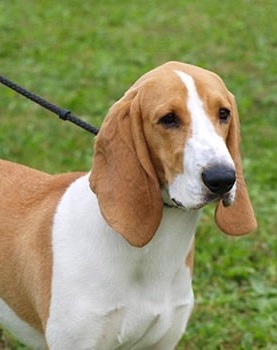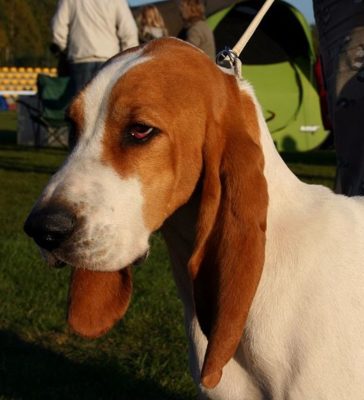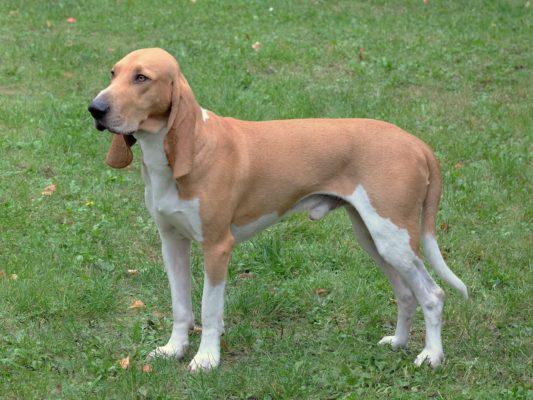Schwyz Hound
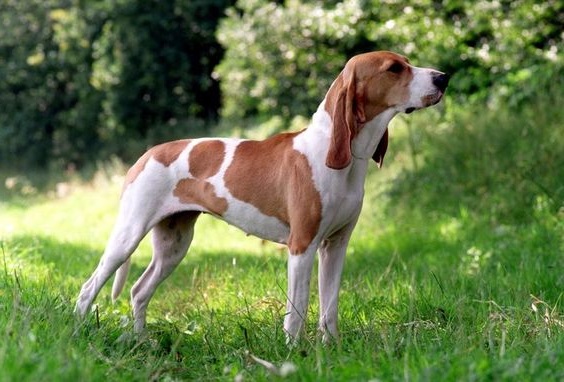
The Schwyz Hounds have inherited their ancestors’ hunting character, who were excellent hunters in the highlands. With their hunting heritage, today’s Schwyz Hounds are independent and confident, courageous and determined. They can be used for hunting either alone or in the company of other four-legged companions.
Table of Contents
Breed Information
| Another Name | Swiss Hound |
| Origin | Switzerland |
| Height | Males 49-59 cm Females 47-57 cm |
| Weight | 27-30 kg |
| Fur | Short |
| Color | White with light red or orange spots and flecks |
| Lifespan | 10-12 years |
| FCI Classification | Scent hounds and related breeds |
| Group | Hunting dogs |
| Price | From $400 |
Breed Photos
Origin History
The Schwyz Hound is part of a group of Swiss Hound breeds whose origins go back many centuries. The lack of details about the origin of this breed makes it even more mysterious and interesting. There is a theory that the Swiss Hound ancestors were very popular in the fifteenth century in Italy, where they were later brought to France and Switzerland. In Switzerland, in the XVIII century, was bred Swiss Hound, a variation of the Swiss Hound. Historians say that this is confirmed by the image of a pack of dogs, similar to the Swiss Hound, on ancient Switzerland’s mosaics in the XVIII century. It was in those days that Switzerland was part of the Roman Empire.
Officially, the first standard for the Schwyz Hound was documented in 1882 and revised in 1909. In 1993, the Fédération Cynologique Internationale adopted a unified standard for this breed under Swiss Laufhund, which included the Schwyz Hound subspecies.
Appearance
The difference between the Schwyzian Hound and other subspecies of the Swiss Laufhund is the color of the coat – large light red or orange spots and flecks on a white background. It is very rare to find a monochromatic red color of the Schwyzka Hound.
Other characteristics of the appearance coincide with the typical characteristics of other subspecies of Swiss Hounds – elongated body, thin head, deep chest, slightly curved but muscular limbs, long tail, short, dense coat.
The Schwyz hound’s ears are soft, long, floppy, and slightly curled into a tube. Sometimes they can be so long that they reach below the tip of the nose.
Character
The Schwyz Hounds have inherited their ancestors’ hunting character, who were excellent hunters in the highlands. With their hunting heritage, today’s Schwyz Hounds are independent and confident, courageous and determined. They can be used for hunting either alone or in the company of other four-legged companions.
At the same time, this breed’s dog is very friendly and affable, which allows you to keep him as a pet. Schwyz Hounds are characterized by attachment to their owners and obedience; they do not like to be alone and do not tolerate separation. Deciding to get a four-legged friend of this breed, you should remember that it is not worth keeping it in the apartment because it needs a lot of space to spend all its energy.
Care
The best and most successful place to keep the Schwyz Hound is a clean and warm enclosure in the yard, where it will have enough space and nothing will limit its movements. At the same time, it should be remembered that providing space for movement is not enough to provide the Schwyz Hound with the necessary strain. Representatives of this breed require a lot of attention from the owner; they like walking and playing with a lot. Providing regular exercise is one of the key rules of care and maintenance of the Schwyz Hound, which should always be remembered and followed.
Schwyz Hounds have a short coat, so it does not require much effort in grooming. It is enough to comb the dog regularly with a special brush and wash when necessary. After walking in the park or the woods, you should check the dog for ticks and other insects.
Training
When beginning to train the Schwyz Hound, one must remember that it is natural to have hunting instincts, which can be developed and controlled with training and training. Due to characteristics such as self-confidence and independence in this dog’s character, their training will require persistence from the owner.
In training, the owner needs to earn the recognition of authority from the pet. Then the Schwyz Hound will become more obedient and comprehensible. During training, you can come up with a system of rewards with food, which will make the training more successful.
Common Diseases
Schwyz Hounds, in general, are not prone to disease, they are quite hardy, and with good care and nutrition, they don’t get sick very often. But this does not mean that they never get sick. The most common diseases among Schwyz Hounds are related to ear inflammations and infections, and musculoskeletal disorders.
The floppy ears of Schwyz Hounds with improper or insufficient care are prone to develop inflammation and infectious diseases, of which redness, unpleasant odor, rashes may testify. If not taken care of in time, there are risks of developing chronic inflammation and hearing deterioration.
A dog’s small size is the cause of such a disease as hip dysplasia. Therefore, it is very important to see your veterinarian if you notice even the slightest change in your dog’s walking.
Nutrition
Since the Schwyz Hound needs regular exercise in its care, its diet must be sufficiently caloric. The dog of this breed should be kept on high-quality adult dog food or balanced natural food.
An important point in the diet of the Schwyz Hound is to contain plenty of protein to maintain muscle mass and vitamin levels. Vitamin levels can be maintained with special capsules and drops that may be prescribed by the veterinarian and natural foods such as greens and vegetables.
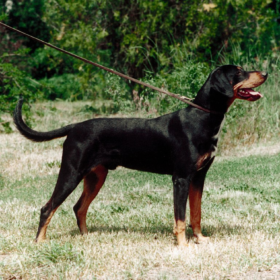 Transylvanian Hound
Transylvanian Hound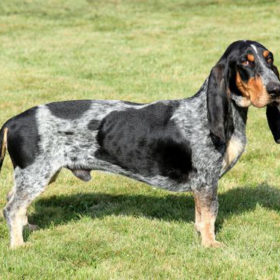 Basset Bleu de Gascogne
Basset Bleu de Gascogne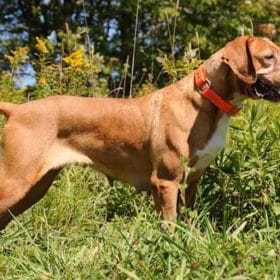 Portuguese Pointer
Portuguese Pointer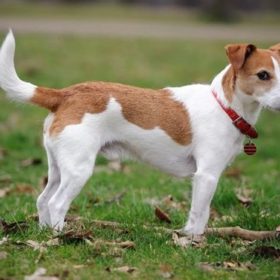 Parson Russell Terrier
Parson Russell Terrier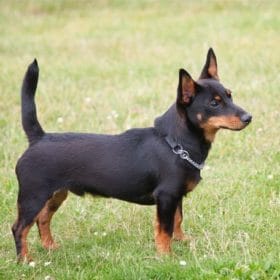 Lancashire Heeler
Lancashire Heeler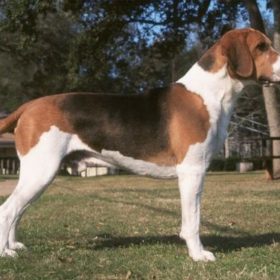 Harrier
Harrier